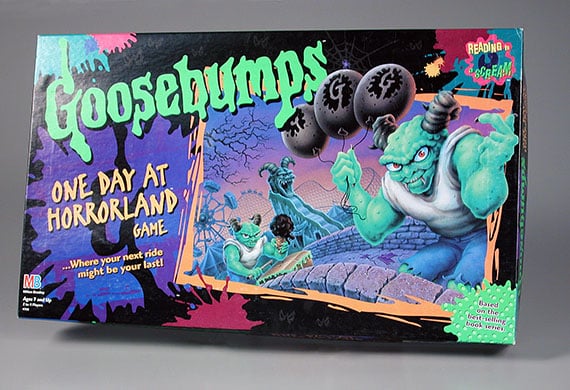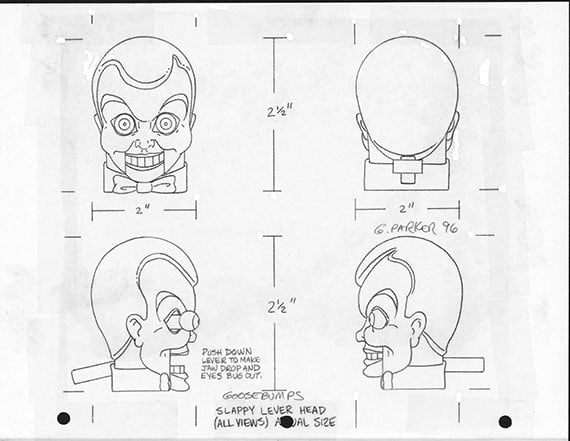Childhood is sometimes punctuated with brief but potent moments of blinding fear. Children often have imaginations that run amok and dark, isolated places are perceived as settings of unspeakable horrors that must be avoided at all costs. Kids can convince themselves (and some of us, even as adults, are still convinced) that horrible creatures await in the basement to snatch an unsuspecting victim; that vengeful ghosts haunt dark hallways; and hideous monsters hide under the bed, preparing to grab the next set of feet that come too close. These awful images affect even the bravest children. My seven-year-old daughter, the strongest and most independent child I know, still won’t venture down to the basement by herself (she often cons her older brother—who is just as scared as she is, but afraid to admit it—to go with her).
It is an uncomfortable feeling to be scared. You begin to sweat, nervously twitch, and conjure up images of your impending doom. And yet, paradoxically, it is hard to resist a good horror story. Scary stories allow us to imagine—in a seemingly safe space—what’s really in the basement without any actual danger.
Children find themselves drawn to scary stories and, with a hyperactive imagination, I can easily comprehend why. Author R. L. Stine, known as the “Stephen King of children’s literature,” understood this, and made a successful career out of it. In 1992, Stine created the Goosebumps series. With the tag line “Reader Beware—You’re in for a Scare!”, the series targeted children and capitalized on their desire for a good creepy read. The books were never violent (a person never died in the stories) yet portrayed the seemingly mundane as something that could become extraordinarily terrifying. For example, there was the marionette named Slappy the Dummy that came alive at night and terrorized its owner. There was also an old camera that, when a picture was snapped, accurately predicted awful events for the photo’s subjects . Even a safe space, such as the library, could contain monsters (as in the book The Girl Who Cried Monster). The series explores common fears as well, with titles such as Stay Out of the Basement and The Ghost Next Door. Much like other kids my age in the 90s, I remember reading these stories at night (to maximize the horror, of course), paralyzed with so much fear that I had a difficult time getting out of bed to go to the bathroom, because who knows what’s waiting for me in there.
 The books developed immense popularity (reportedly selling 350 million books) and inspired toys, costumes, trading cards, board games, and a popular television series. The Strong has collected many of these memorable playthings, including the Goosebumps One Day at Horrorland board game that provides players the opportunity to navigate through a haunted amusement park. Additionally, in 2013 the Brian Sutton-Smith Library and Archives received the Garth Parker Premium Toy Design Papers, which contain the toy designs for, among other things, Goosebumps characters. These toys were packaged in Burger King Kids Club meals, because what kid doesn’t like a little scary toy with their hamburger and fries?
The books developed immense popularity (reportedly selling 350 million books) and inspired toys, costumes, trading cards, board games, and a popular television series. The Strong has collected many of these memorable playthings, including the Goosebumps One Day at Horrorland board game that provides players the opportunity to navigate through a haunted amusement park. Additionally, in 2013 the Brian Sutton-Smith Library and Archives received the Garth Parker Premium Toy Design Papers, which contain the toy designs for, among other things, Goosebumps characters. These toys were packaged in Burger King Kids Club meals, because what kid doesn’t like a little scary toy with their hamburger and fries?

Although the original series ended in 1997, its popularity still persists today. A few spinoff series have emerged over the last two decades, such as Give Yourself Goosebumps (a Choose Your Own Adventure type book), Goosebumps 2000, and Goosebumps HorrorLand. These books allow the series to remain relevant, and have proven almost as popular today as they were in the 1990s. My son, just like I once did, insists on reading his books in bed, with the lights off, equipped with a flashlight in his hand—and the bathroom light on, just in case.
And for those 90s kids who are seeking to revisit their childhoods (very much like the ones that watched the latest Jurassic Park movie this summer), a new Goosebumps movie makes its debut in October. The movie features all of the classic villains, including Slappy the Dummy, the Abominable Snowman of Pasadena, and The Giant Praying Mantis.
So the next time your child protests about having to run down to the basement to change out the laundry or insists that she really needs the hall light on, it’d probably be best to be a little sympathetic. Because you never know, there might really be a monster hiding in unexpected places.



